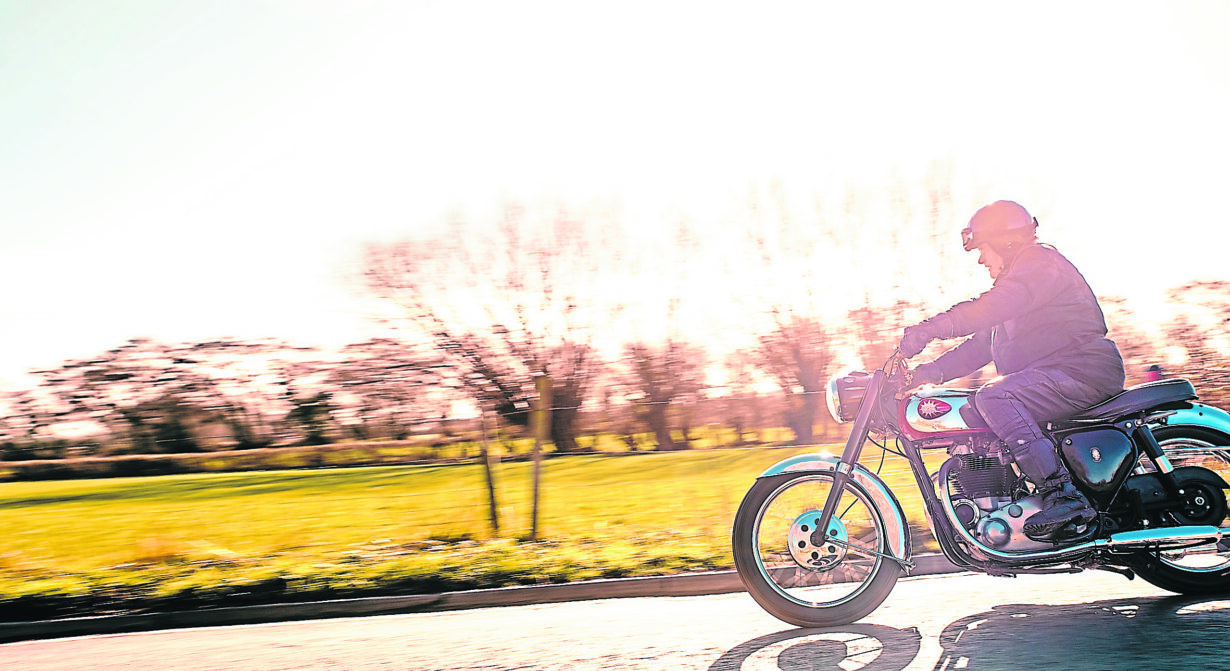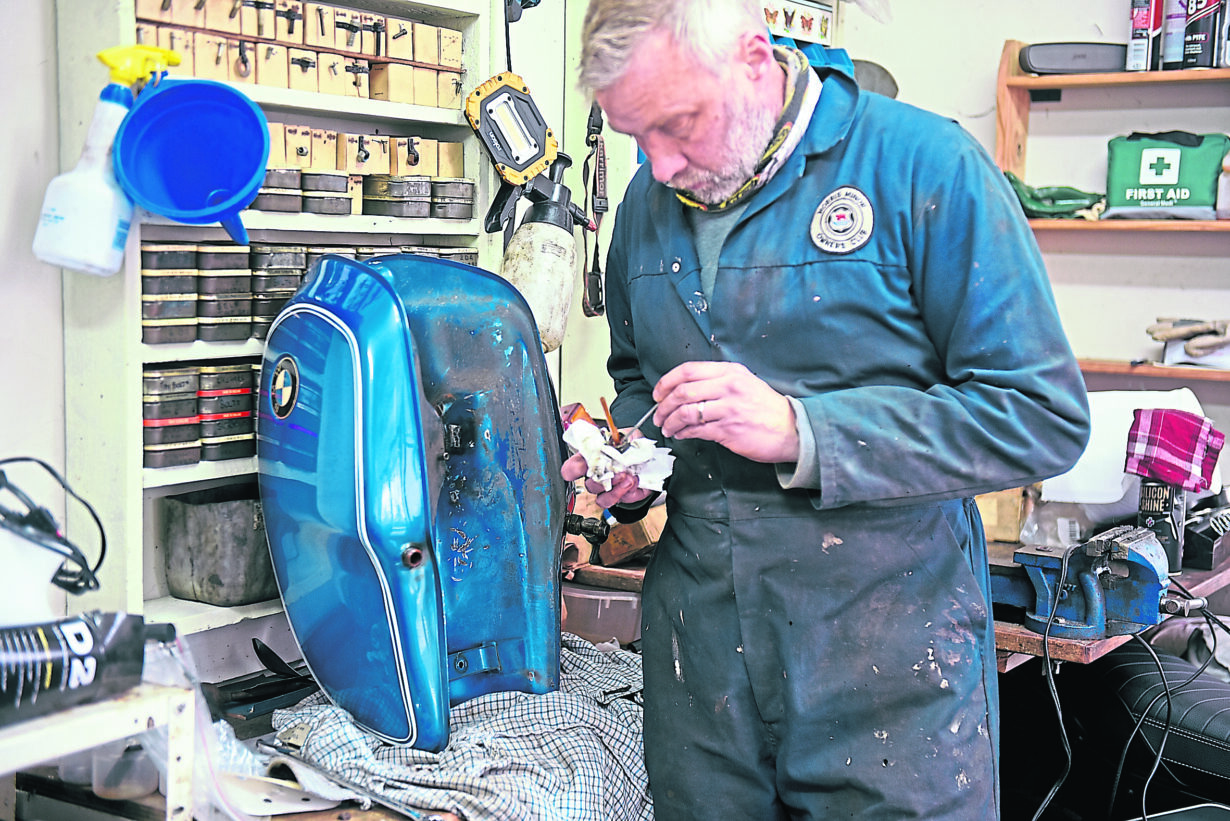The good folks at Classic Bike Guide magazine have been sharing their hard-won wisdom about what’s involved when hunting out and fixing up old bikes…
WORDS and PHOTOS: Matt Hull
Temptation
Enjoy everything MSL by reading the monthly magazine, Subscribe here.
First of all, do you really want it? Will you use it, can you afford it, and is there room? Does it give you what you want more than any other bikes you have? And if you’re seeing a ‘quick buck’ at the end, are you sure? Do sums – will there be a ‘tickle’ at the end? Break down the amount of time you think it will take into hours, then divide that by your estimated profit – chances are the hourly rate will see you better off stacking shelves. Be honest with yourself.
If you’re still looking, you need to know what is involved. Is it registered? What’s the story – why is it a project? This may help with the work it will take. Did it get left in the shed because a valve had bent, piston ring broke, or – a common one – it had been run dry of oil? Did the owner pass away? In which case, there is much less suspicion in what fun lays inside the engine. Ask questions, check on the computer for previous MoT tests and fails or advisories, and leave those rose-tinted glasses at home. Apologies for this, but trust no one – professional dealer, autojumble trader or innocent old lady. Do believe half of what you see and none of what you hear.

What’s actually included? Is everything there? Many bikes get started, then spend years waiting for some love, and parts miraculously disappear. Do the numbers match, or is the price a reflection of this? If presented with boxes of parts, take some time to look through them – are they actually for that bike? A Triumph, BSA or BMW are fairly easy to get parts for, but Aermacchi and small Italian two-strokes may be trickier. How good are you at making do or machining your own parts?
A project is a big commitment in time. Ask yourself again: do you have time, the space, the right tools, folk around who will be able to help with the jobs you’re not so confident with? And do you actually want it once it’s finished?
If not, keeping motivated will be an issue and the bike could turn into another unfinished project…

Many projects have question marks hanging over them. Paintwork is obvious, wheels, tyres, tears in seats and rusty chrome or broken fairings… but what’s the engine and gearbox like? What proof is there – will it have to be stripped down? A seized gearbox is not a pleasant experience, trust us. In short, don’t be rushed, know what you’re getting, and know it is possible.
Lastly, don’t forget you have to get the bike home! Will it fit in a trailer or can you borrow a van (are you insured)? It all adds up. You can be lucky – I picked up a Norton ES2 in the back of my Renault Clio…
“A project is a big commitment in time. Ask yourself again: do you have time, the space, the right tools, folk around who will be able to help with the jobs you’re not so confident with?”
What do you want from this bike?
A question you must be honest about. If you envisage returning from a concours competition with a trophy, then you know the project will be a nut-and-bolt restoration, with hundreds of hours, dry builds, specialist services and thousands of pounds spent – nothing but perfection will do. You must also realise that the amount of time and money invested does not guarantee getting anywhere near that amount back, if that matters to you.
On the other hand, you may wish to get the bike running, make it safe, and get it on the road. That could mean a major service/safety check, or it could mean rooting through the boxes of bits and bolting everything together.

Working out cost
Some elements are – for most, at least – a given cost… oils, brake pads or linings, filters and the most costly nowadays, tyres. A pair of black hoops alone are between £150 and £200. Plus fitting. And unless you want to risk old rubber, new tubes and rim tape. Wheels may need spokes or, if buckled, may be rebuildable. A rim will be about £200, while a spoke kit is £50 to £75, plus building. Alloy wheels can be repaired, often by a specialist. Bearings may be needed, but check as they might just need cleaning and repacking with grease. Cables look alright until they snap, so check the ends for fraying and lube the inner cables. Electrics often need clearing of dust or spiders, wires checked for mice nibbling, and connections cleaned and lubed to give the best contact. Run through it with a wiring diagram if possible, especially if some parts look like they’ve been meddled with. A new set of plugs will be one less thing to worry about and are cheap. Batteries range from £30 to £100; most other wiring costs are cheap or free! If you are going further, then look at budgeting for paintwork, which with prep will easily come to more than £1000 for a great job. Then there is the frame: some paint, while others powdercoat. Whichever way you go, get all parts done at the same time to save on cost. Easy steps like chain and sprockets can be close to £150 for a larger bike, and exhausts, so often the icing on a great restoration, can cost hundreds. Lastly, check the fuel tank, especially if there has been fuel in it. Make sure it is safe, not rusty inside, and consider having it sealed. Replace the fuel hoses and fit a filter to stop rubbish blocking the carbs.
Time
If this is a retirement project, great, but think realistically about how long you intend it to take. Do the kids have clubs three evenings a week? Are you notorious for not turning down overtime? Or is your social calendar full? Work all this out now and it won’t end up being yet another unfinished project in the small ads.






